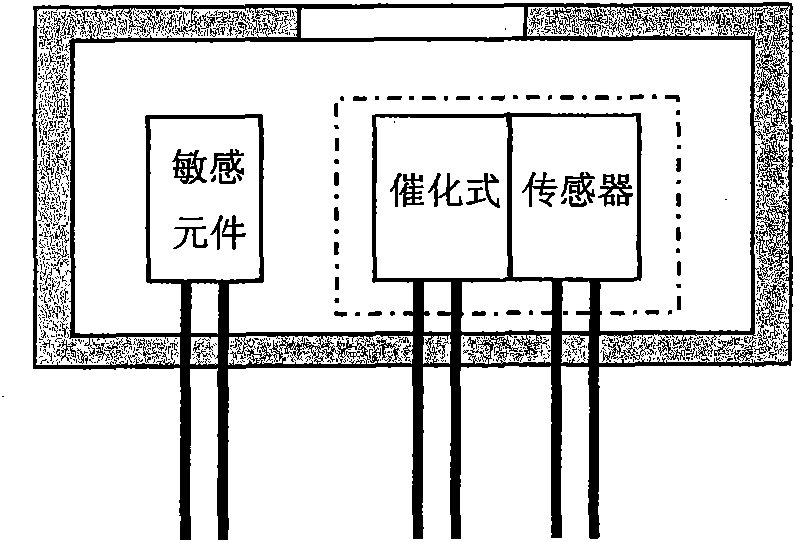Zero point self adjustment and calibration method for catalytic gas sensor
A gas sensor, catalytic technology, applied in the direction of material resistance, which can solve the problems of short calibration period and inability to realize real-time self-calibration zero point.
- Summary
- Abstract
- Description
- Claims
- Application Information
AI Technical Summary
Problems solved by technology
Method used
Image
Examples
Embodiment Construction
[0023] refer to figure 1 , indicating the process flow chart for the preparation of low-range gas sensor sensors. The process consists of the following process steps: preparation of nanocomposites-aging-solid-liquid separation-washing-dehydration-drying-heat treatment-slurry-coil winding- Welding-coating-heating-tube sealing-integration with catalytic gas sensor-zero point self-adjustment. The manufacturing methods between the various steps can be combined according to specific requirements.
[0024] The specific implementation is as follows:
[0025] a. The nano-semiconductor tin dioxide, antimony pentoxide and cerium oxide composite sensitive materials are prepared by chemical co-precipitation method, and the materials are formed after aging, centrifugal solid-liquid separation, deionized washing, organic solvent dehydration, vacuum drying and heat treatment For sensitive materials with lower resistivity, when the sensitive material forms a spherical body with a diameter o...
PUM
| Property | Measurement | Unit |
|---|---|---|
| diameter | aaaaa | aaaaa |
| electrical resistance | aaaaa | aaaaa |
| diameter | aaaaa | aaaaa |
Abstract
Description
Claims
Application Information
 Login to View More
Login to View More - R&D
- Intellectual Property
- Life Sciences
- Materials
- Tech Scout
- Unparalleled Data Quality
- Higher Quality Content
- 60% Fewer Hallucinations
Browse by: Latest US Patents, China's latest patents, Technical Efficacy Thesaurus, Application Domain, Technology Topic, Popular Technical Reports.
© 2025 PatSnap. All rights reserved.Legal|Privacy policy|Modern Slavery Act Transparency Statement|Sitemap|About US| Contact US: help@patsnap.com



